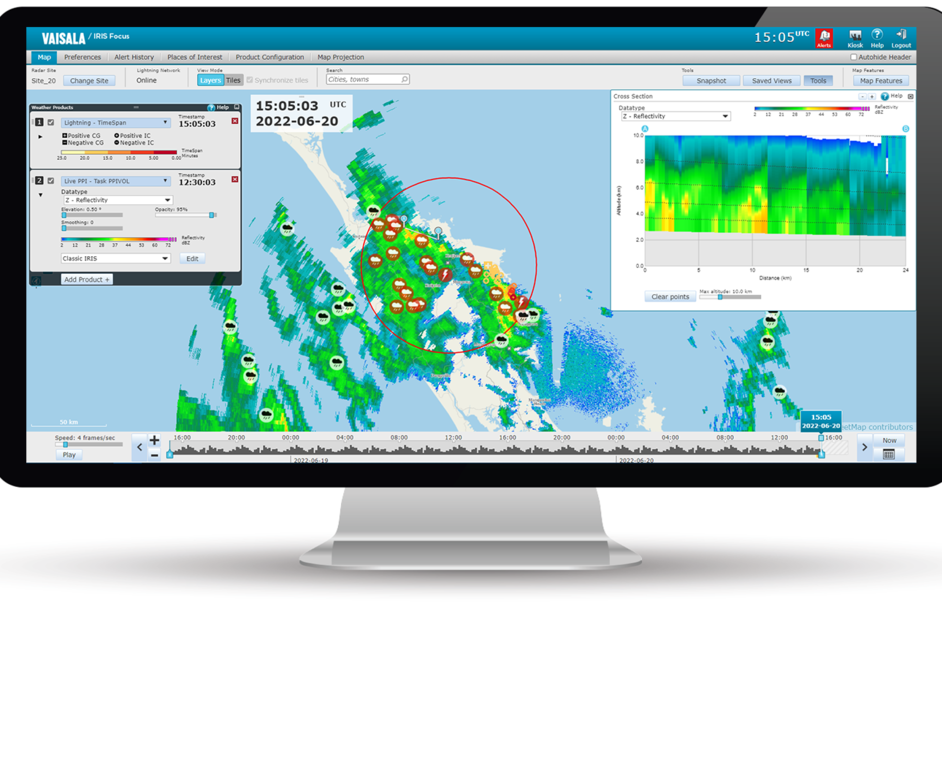Creating weather events
You must create weather events to enable weather alerts in IRIS Focus. Users can then add the weather events to areas of interest, and see alerts when the events occur on the area.
 |
To be effective, weather event criteria must be based on the local climatology and experience. Vaisala can work with you to develop such a climatology or to better understand the capabilities and limitations of the criteria. Vaisala makes no warranty, either express or implied, that the weather alerts can detect all hazardous weather situations. In no event can Vaisala be held liable for damages of any kind for failure of the system to issue a warning, or for false alarms that may be issued by the system. |
Example: Detecting hail
The occurrence of 45 dBZ at 1.5 km above the freezing level is a good indicator of hail in many mid-latitude locations. Assuming that the freezing level is at 4 km, and you run an echo TOPS product for the 45 dBZ contour, your configured event criteria could check if:
- The TOPS product shows 45 dBZ tops at heights greater than 5.5 km. If yes, there is a high probability of hail.
- To avoid issuing an alert based on a single pixel, a "threshold region" parameter checks if the region of hail signature at least 10 km2 .
- The VIL for the same region (1 ... 10 km) is greater than 5 mm (or a value determined from the local climatology of hail).
Principles for creating weather events
Vaisala recommends using up to 3 products as
criteria. The thresholding and smoothing is performed separately for each, and then the
results are are linked with AND operators.
IRIS Focus classifies weather conditions as a weather event only if the recorded values are smaller/larger than the thresholds defined in the event criteria.
The units of measure depend on the selected product. For example:
TOPSthresholds are specified in kmVILthresholds are specified in mm.
-
IRIS Focus thresholds the input product (45 dBZ
TOPSin the example) so that only points larger than the threshold are considered (for example, >>5.5 km).The result is a 2-D binary array.
- IRIS Focus smoothes and connects the significant weather regions that are almost touching, and eliminates any isolated bins.
-
Contiguous regions are identified. The location and size of each region is computed.
Regions below the threshold size are discarded.
- IRIS Focus determines whether any part of any region is within an area of interest.
- IRIS Focus shows the significant weather, hail, as a weather event outside areas of interest or as an alert within areas of interest.

